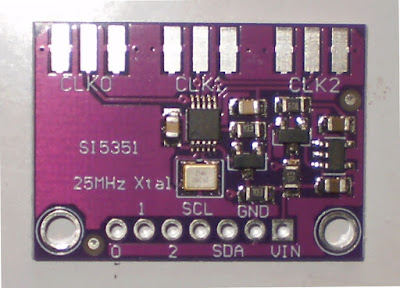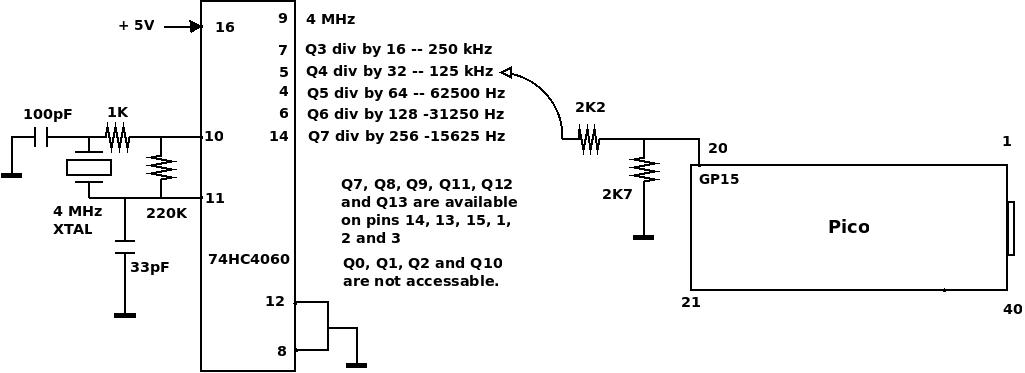100 Watt 40m HF amplifier using air ( plastic ) core inductor
This amplifier is used with 40m QRP rig and IC-718. Power output drops with
increasing frequency. This can be used on 30M for FT8. At 20M power output
drops to 4 Watts :-(. At 80M power output was more than 150 Watts on dummy
load however it was not used on 80M band.
Objective of this project was to use IRFP450 MOSFET in the final stage of a linear amplifier for lower HF, using unregulated power supply.
IRF730 MOSFET is used to drive the two IRFP450.
Here is the circuit...

Some resistors were paralleled to increase wattage. These are drawn with thicker lines.
This picture explains how paralleled resistors are shown in the schematic.
R1 ... R10 are paralleled resistors. Values of the resistors are shown on the
diagram and are repeated here.
R1 = 3 || 470R/2W = 156R6/6W
R2 = 3 || 470R/2W = 156R6/6W
R3 = 4 || 150R/2W = 37R5/8W
R4 = 4 || 150R/2W = 37R5/8W
R5 = 4 || 27R/2W = 6R7/8W
R6 = 4 || 27R/2W = 6R7/8W
R7 = 2 || 4R7/2W = 2R3/4W
R8 = 2 || 4R7/2W = 2R3/4W
R9 = 9 || 10R/2W = 1R1/18W
R10 = 9 || 10R/2W = 1R1/18W
Control circuit ( Carrier detect, relay driver, bias and cooling fan ) is
shown separately .
The amplifier is put inside an aluminium box with hinged cover. The box serves as heat sink.
A copper sheet is used to spread heat to the aluminium box.
The heat spreader looks like this.

RFC in drain of Q1 ( IRF730 ) is made in form of a toroid with plastic core.
A 25 mm length of plastic water pipe of 1.5 inch ID ( OD = 48mm )was used.
These pictures show steps
in construction.
Some holes were drilled in the pipe section to reduce loss.


Started winding with 22 feet of Teflon covered wire. A small length of wire
was left over. While winding again wished for hollow Teflon toroid!

109 turns of single layer winding produced 18 uH.
Another RFC was made using similar pipe section of 20 mm length. 115 turns produced 16 uH. 20 feet 2 inch wire was used including two 4 inch end pieces.
18 uH RFC was used in the final circuit.
Conventional transformer is used to drive the gates of two IRFP450.
Construction of the transformer is explained with some pictures.
Two 4 cm copper tubes of 5 mm OD were used. 1 cm x 3 cm piece of PCB
was used to short one end of two tubes.

Sleeves were used inside and outside of each tube.

Inside sleeves prevented chaffing of primary winding at the ends of copper
tubes.

Outside sleeves prevented cores to touch the copper tube. The cores have some
conductivity. Epoxy coated T13 cores were not available.

Three T13 cores were used on each tube.

Primary has two turns of Teflon covered wire.

Inductance between two open ends of cu-tubes = 7 uH.
Inductance of two turn primary = 30 uH
When two T13 cores were used on each leg:
Inductance between two open ends of cu-tubes = 5.4 uH.
Inductance of two turn primary = 21 uH
These inductance values appeared to be more suitable but the four T13 cores
were getting warm. So another core was added on each leg. Cores can be added
or removed when open-frame construction is used.
The drain transformer, T2 of the push-pull stage used about 30 mm long,
48 mm OD plastic tube section.

One red and two black Teflon covered wires were twisted together using a
power drill. This trifilar wire was used for winding. 56 turns were used.
Drain DC feed was at the middle of the red wire.
Two ends of black wires were joined to make a coil of twice the number of
turns of red coil. The inductance of larger black coil = 26 uH.

The amplifier is powered by a simple unregulated power supply of about 75 Volts.

Four 200W/230V filament lamps are used for current limiting.
Power output was measured with a dummy load fitted with RF probe.

Six 1N4148 diodes are used for RF probe to increase reverse breakdown.
Going to connect a 10K resistor across each diode.
73 ........ VU2NIL






Comments
Post a Comment